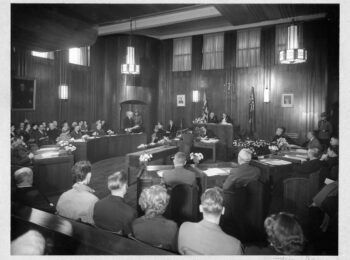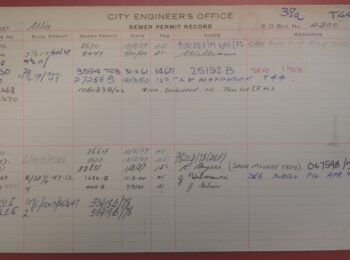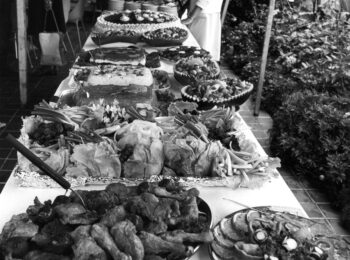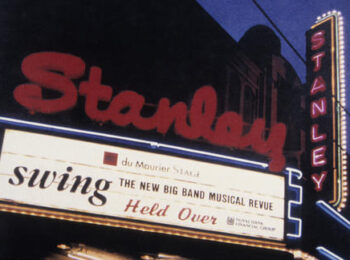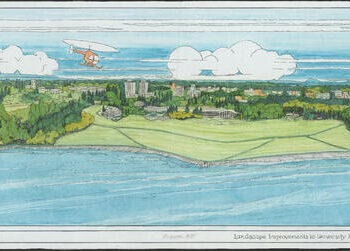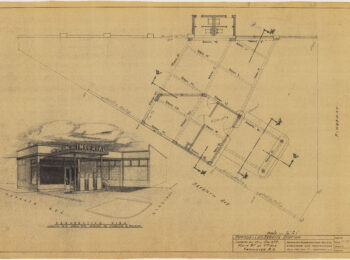You may have heard that Postmedia Network Canada Corporation donated approximately 5.6 million Vancouver Sun and The Province photographic negatives to the Archives in 2017. You may have also heard that around this time last year, 25,000 Vancouver Sun photo assignments (out of 250,000 in the whole donation) became available for searching on our online database. You may even be one of the many researchers who in the past year has accessed and viewed these negatives in person in our Reading Room. But do you know the steps involved in making those negatives available for viewing?
Well, if not, you’re in luck! In honour of achieving a milestone 50,000 photo assignments available (that’s over 1.1 million images!), we’d like to give you a glimpse of the work that goes on behind the scenes to make this happen.
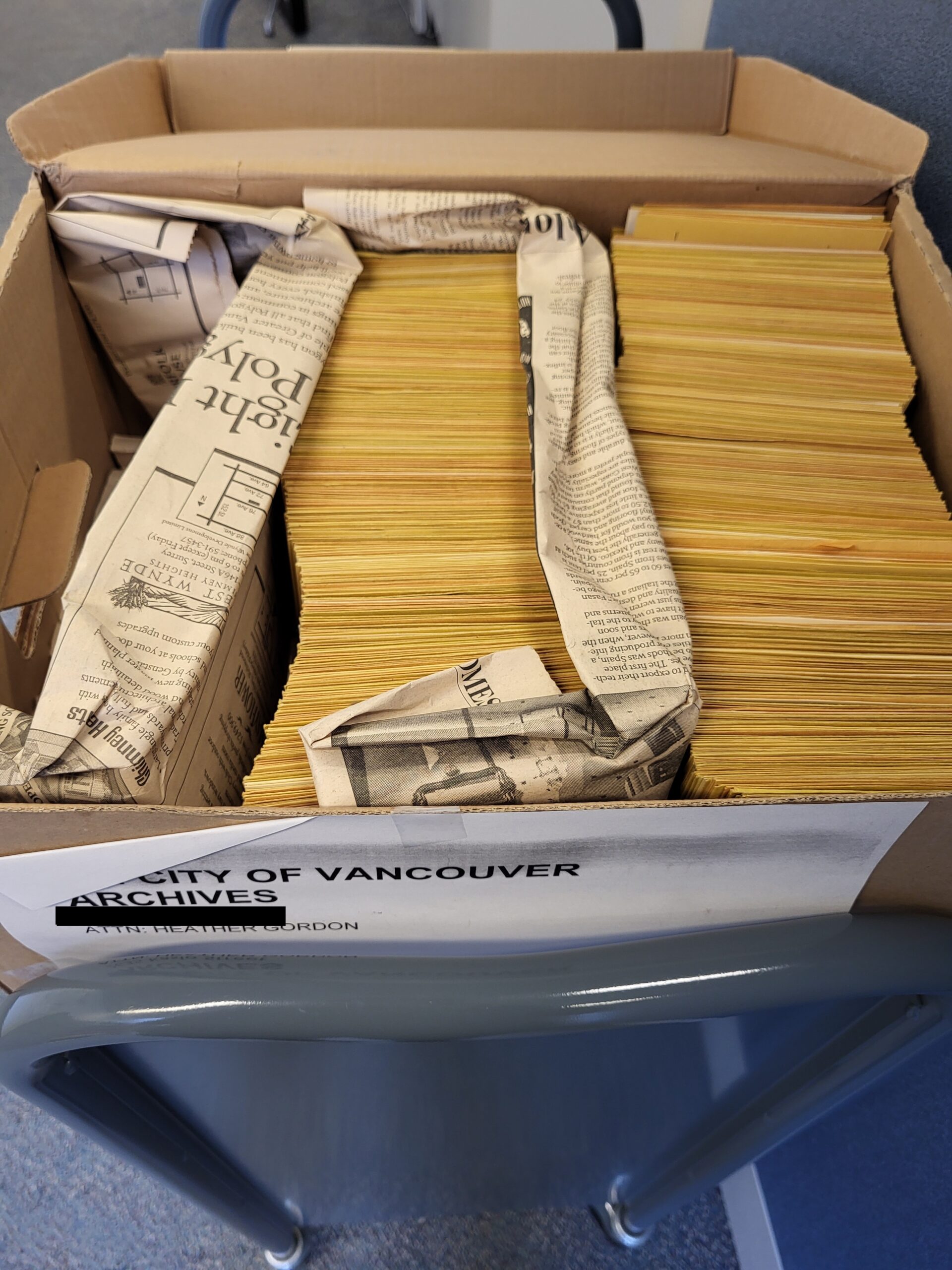
The journey begins with a banker’s box. A peek inside reveals approximately 1,800 tightly-packed envelopes, each representing a single photo assignment given to a Sun photographer. These envelopes are taken out of the banker’s box in batches, making the processing more manageable. Each envelope is given a unique identifier, which becomes its reference code in our database. Stamping the first part of the identifier, ‘AM1616-S1-F,’ helps speed up the process, as all envelopes in this series will have this same eleven-character ID reflecting the fonds (AM1616) and series (S1) numbers. The six-digit file number portion of the identifier (that comes after the ‘F’) is handwritten in pencil and is unique within the series, with numbers assigned sequentially.
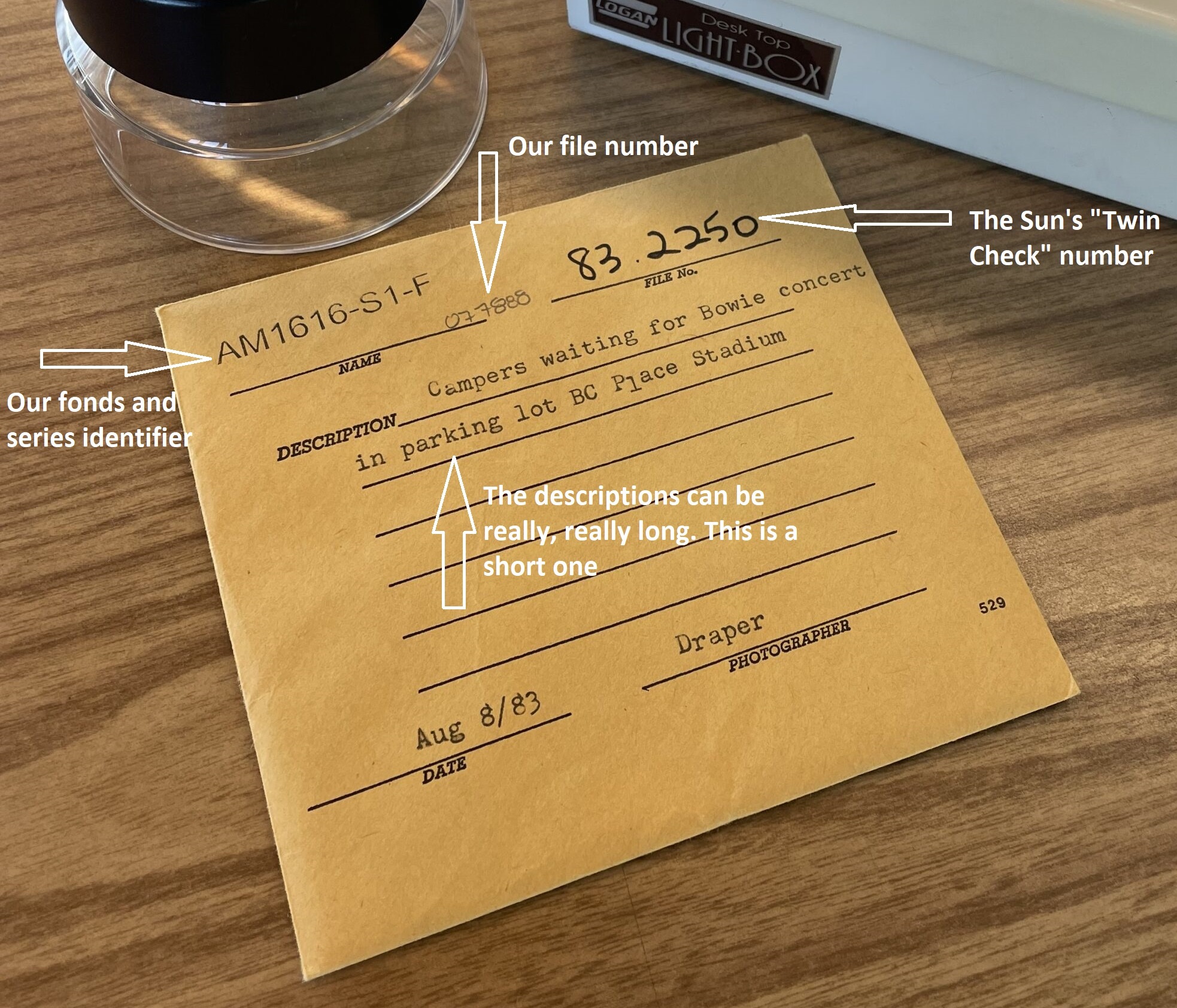
After assigning the envelopes their identifiers, we count the number of images contained in each envelope and record that data in a spreadsheet. Each envelope may contain anywhere from fewer than 10 to more than 100 images on strips three frames long, for an average of 22.4 images per envelope.
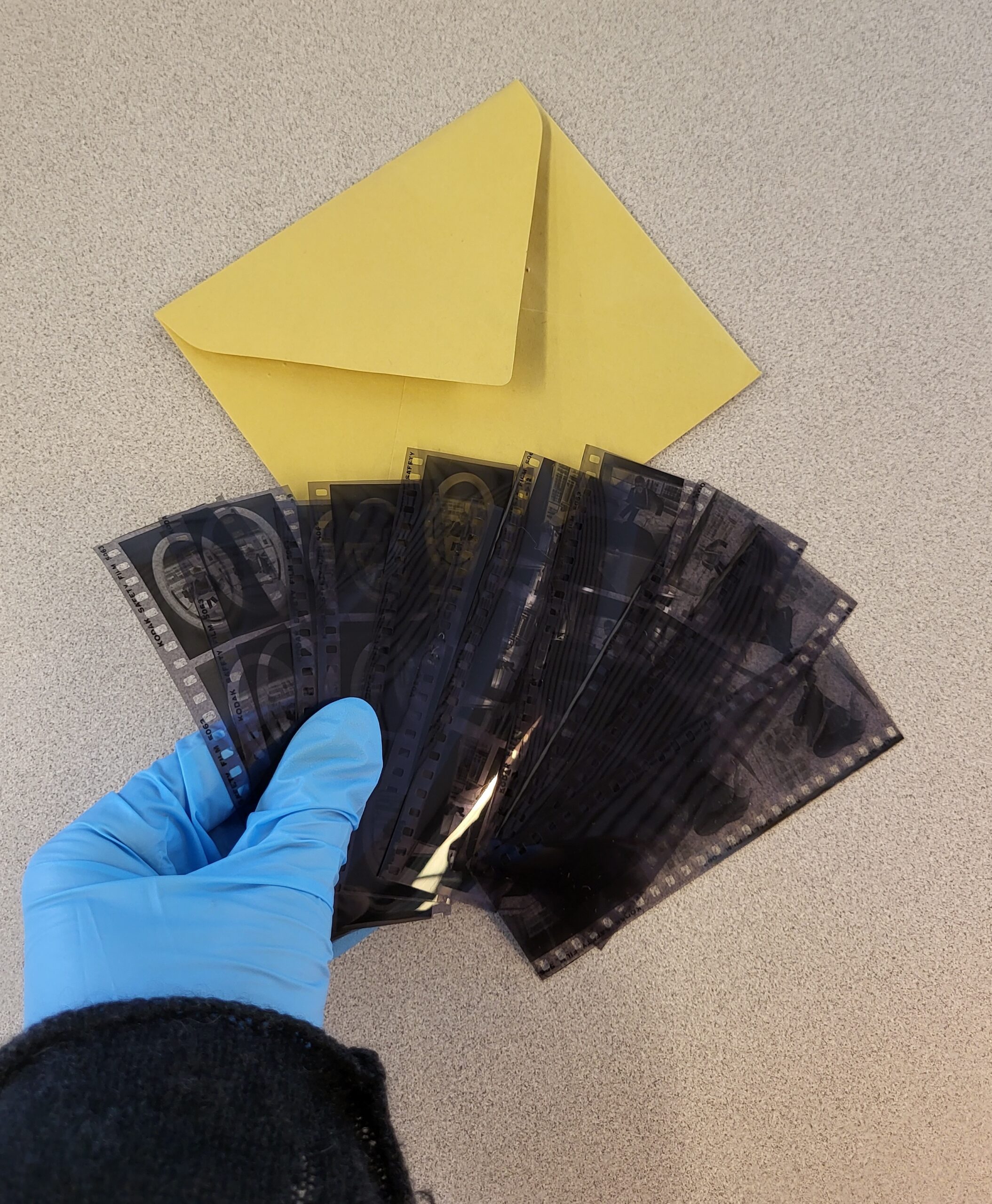
The rest of the information contained on each envelope is transcribed into the spreadsheet, including the assignment title or description of the assignment, the photographer’s name, the date, and if present, the “twincheck” number assigned by the Sun librarians when originally filing the negatives. Other information that is required to make fully standards-compliant file-level descriptions is also added.
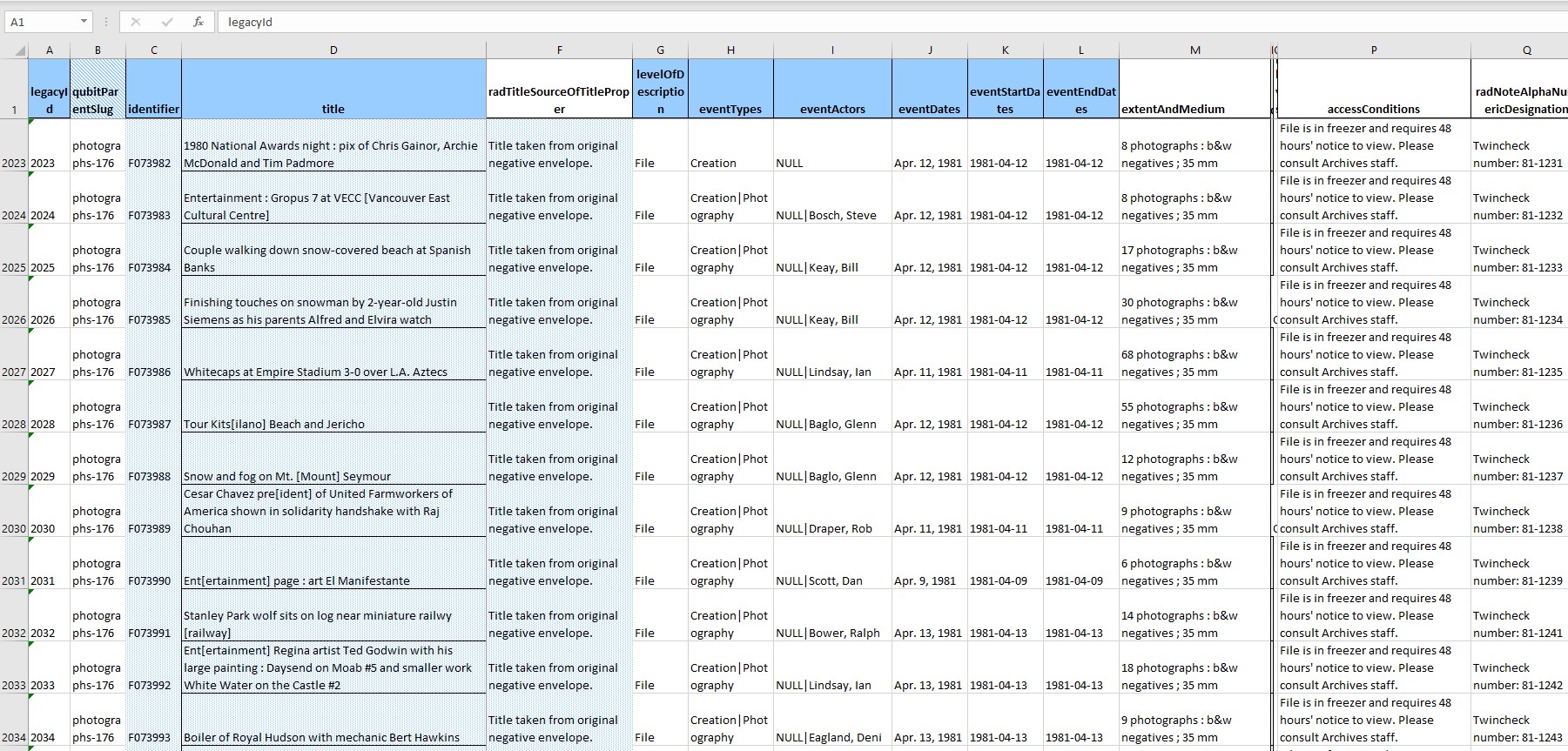
After all of this metadata is captured, the envelopes are transferred to a new, acid-free Hollinger box. Once full, the box is labeled with the AM1616 fonds number, a unique container name and a barcode representing the container name.
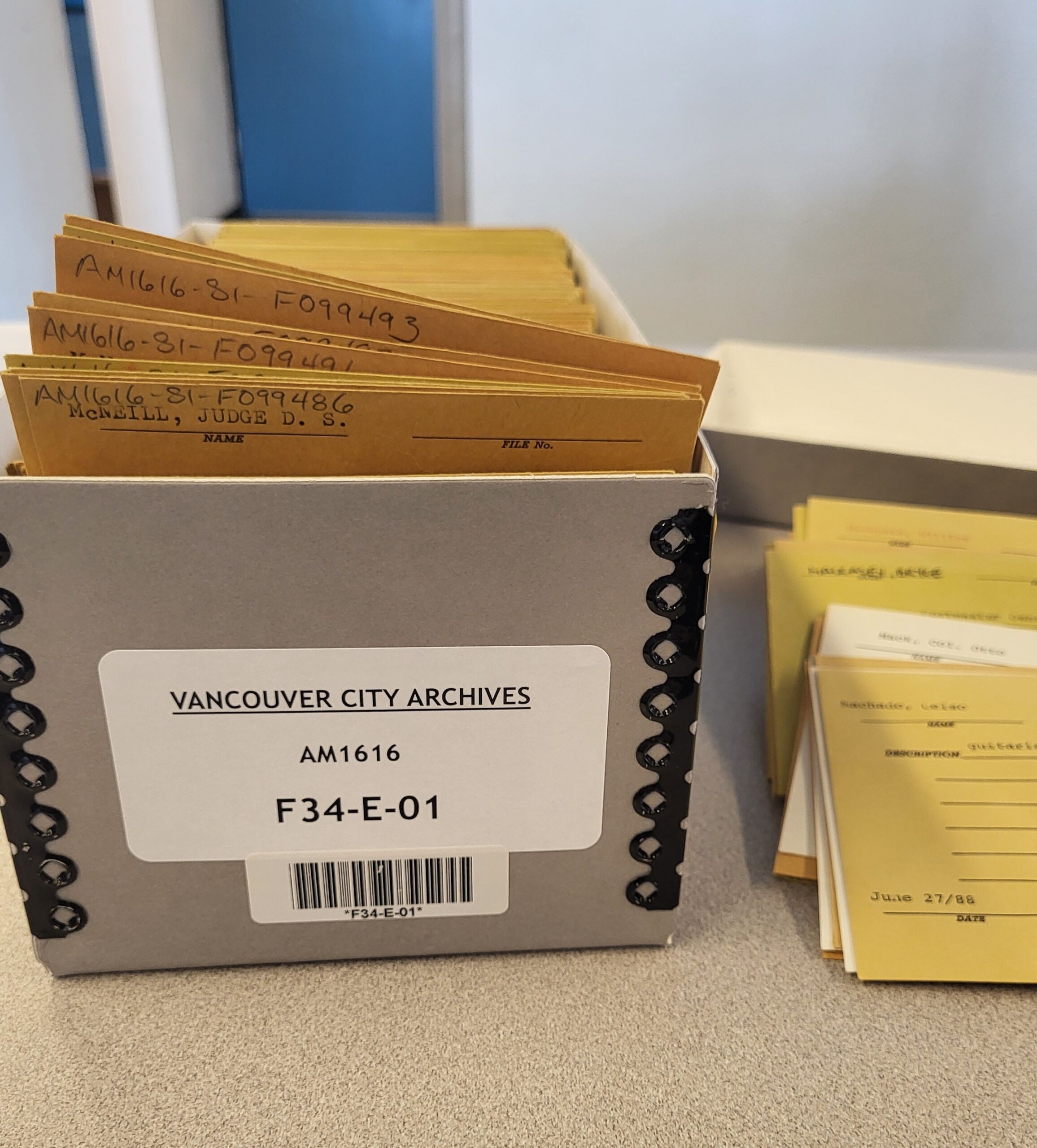
The box is now ready for its trip to its new permanent home in one of our frozen storage vaults. To help the contents of the box slowly acclimatize to the -18 Celsius environment of the vault, the box is placed in a cooler bag and the cooler goes into the vault. After 24 hours, the box is removed from the cooler and placed in one of the sealed frozen storage cabinets, where it resides until someone asks to see some of the negatives.
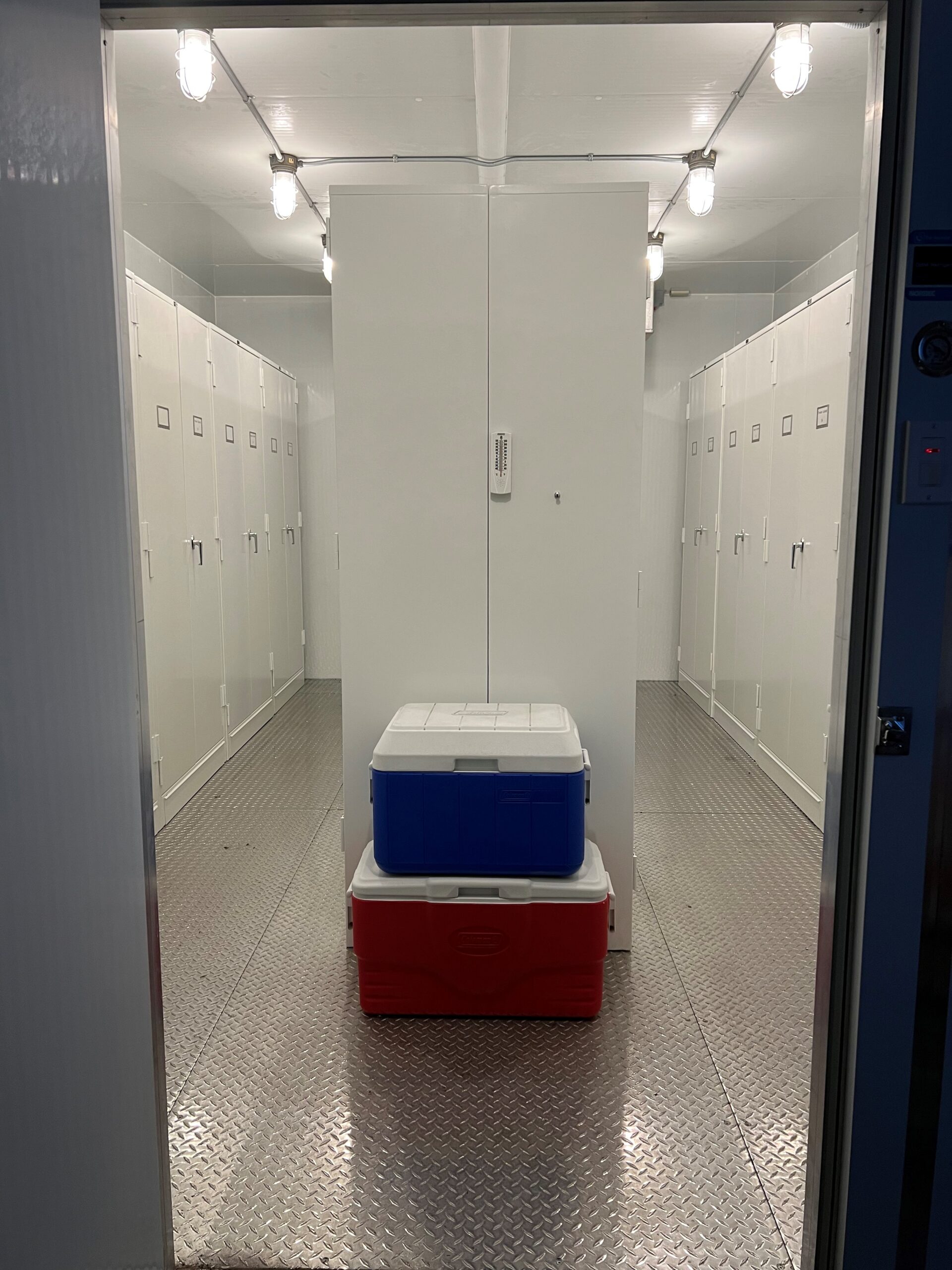
Meanwhile, envelope metadata continues to be added to the spreadsheet and, when 2,500 envelopes have been entered, the spreadsheet undergoes a quality control check. We look for logical places to split very long descriptions, for glaring typographical errors and for any issues flagged during transcription. We also check for offensive or discriminatory language that is reflective of the time period in which the photographs were taken and of the attitudes of the creator. In these cases, we retain the newspaper staff’s original descriptions in order to keep the historical context of creation, but we will supply updated and/or more accurate terminology.
When the quality control work is complete, the spreadsheet data is uploaded to our database and the new file-level descriptions are ready for searching by the public.
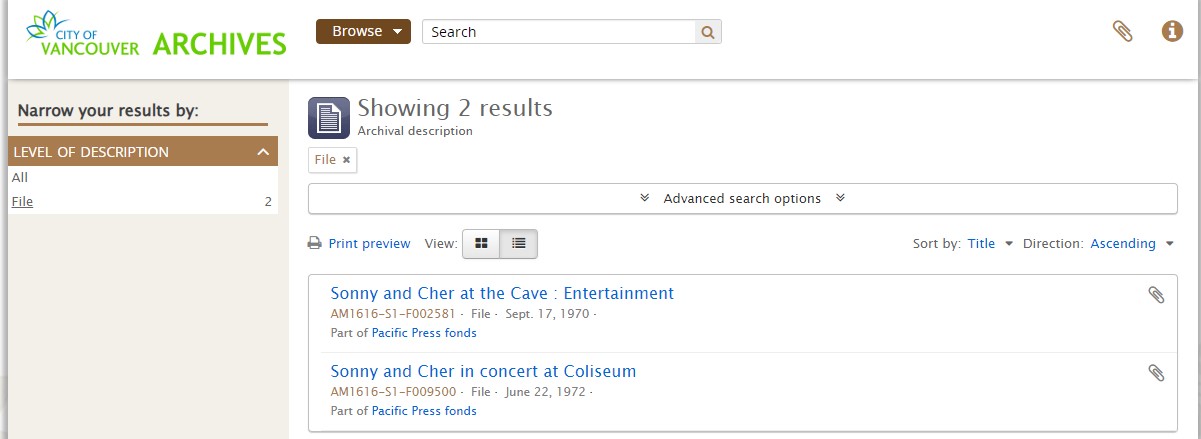
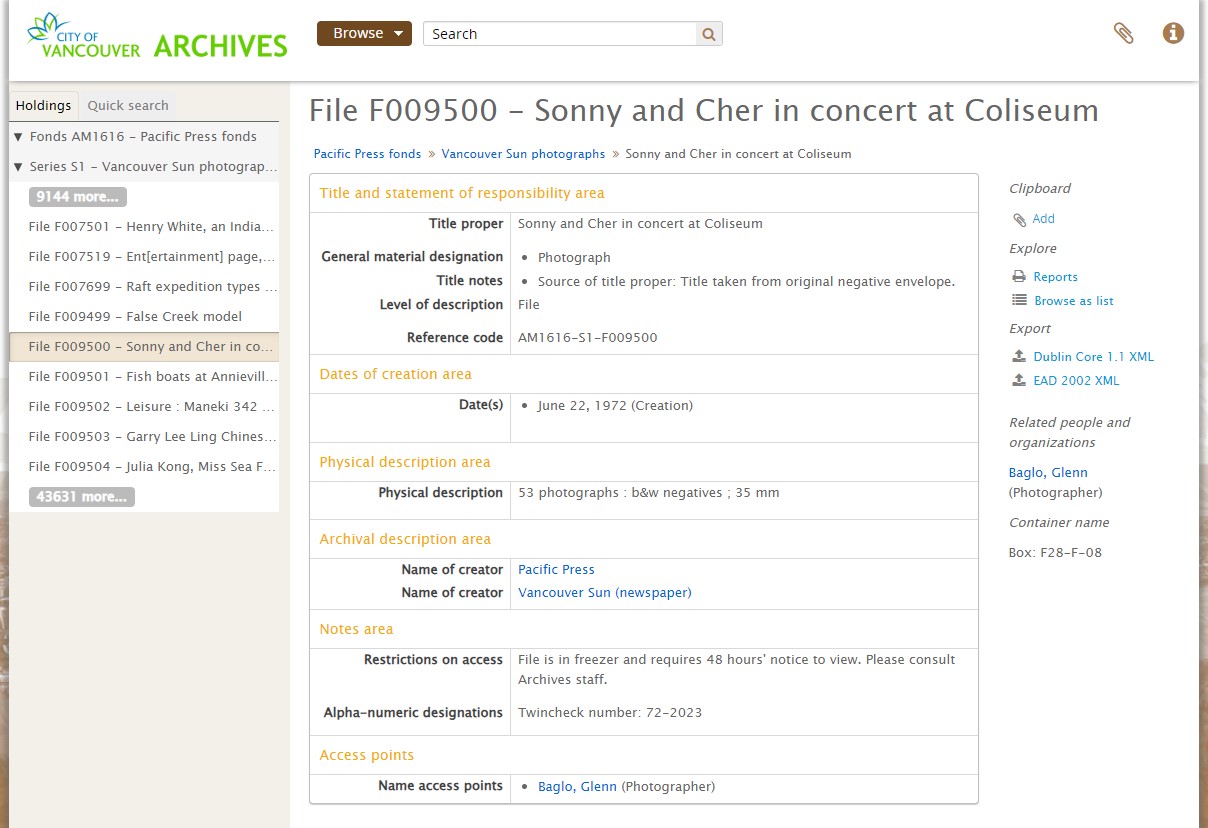
Here’s a video of what this whole process looks like.
As we mention in the video, to view the images, we need 48 hours’ notice, so we can repeat the negatives’ journey in reverse. Once we have a retrieval request in hand, we will pull the relevant envelope from its box and place the envelope in a plastic zip lock bag. The box is placed in the cooler bag and the cooler is brought to our preservation lab to allow the negatives to slowly acclimatize to room temperature. Once thawed, the negatives can be viewed in our reading room on a light table.
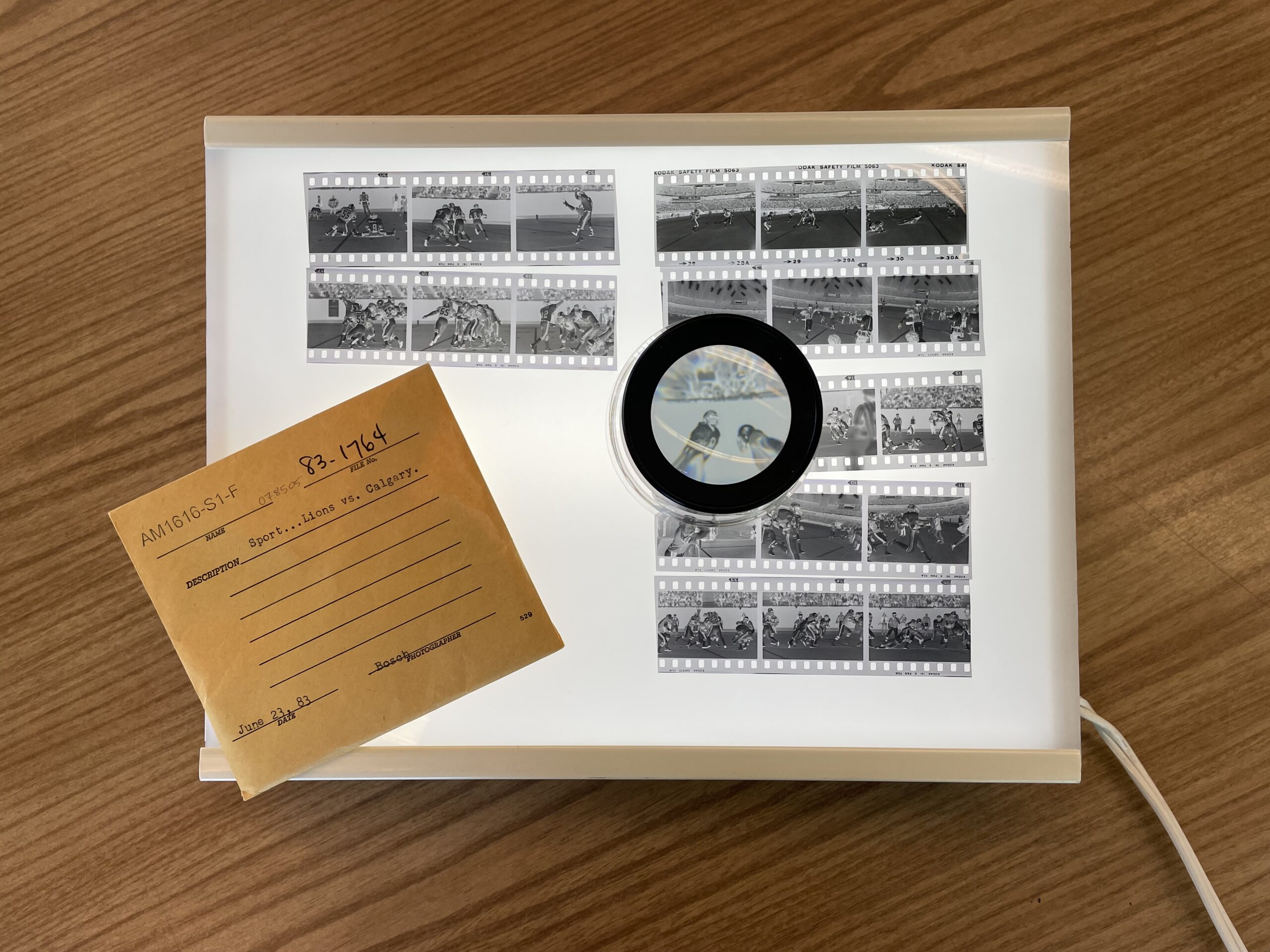
If you need any assistance in finding Sun photographs relating to your research interest, or would like a photo assignment retrieved, please contact us at archives@vancouver.ca or 604-736-8561. The Reference team will be happy to help.
200,000 more envelopes to go!


